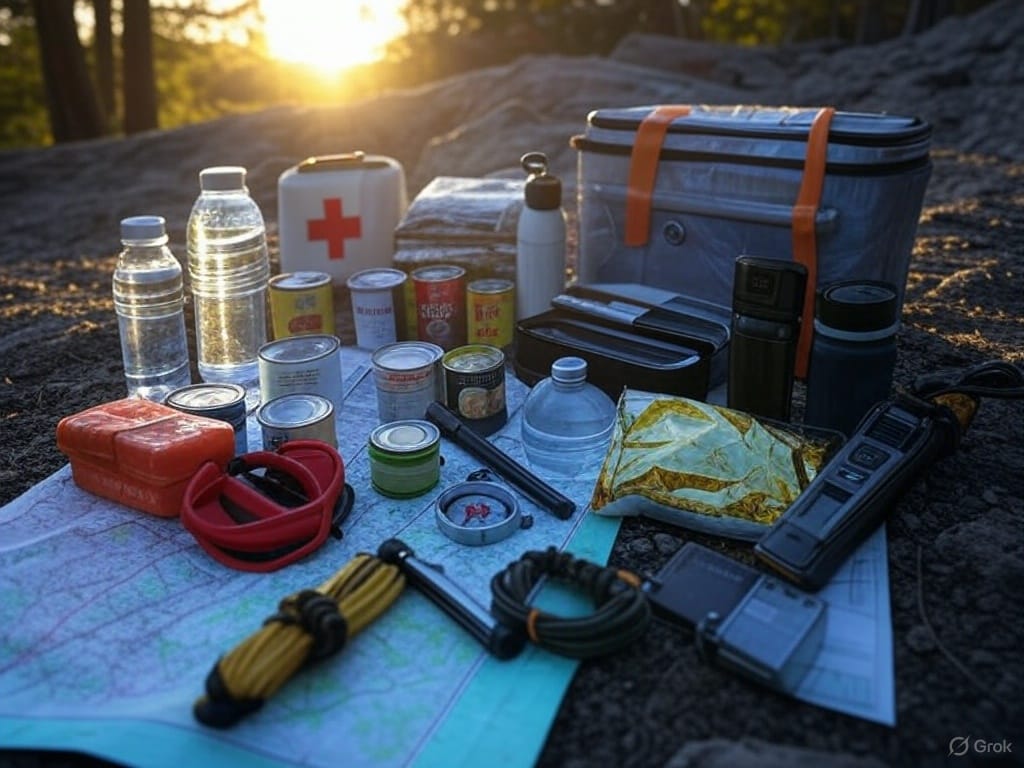Crisis Preparedness Kit
A well-rounded crisis preparedness kit combines essential items like water, food, and tools with practical skills such as fire-starting and first aid, empowering you to face any emergency with confidence.

Emergencies can strike at any moment—whether it’s a natural disaster like a hurricane or earthquake, a power outage, or an unexpected personal crisis. Being prepared isn’t just about having the right gear; it’s about knowing how to use it effectively. A well-rounded crisis preparedness kit combines essential items with the skills to wield them, giving you the confidence to handle whatever comes your way. In this guide, we’ll walk through the must-have components of a crisis kit—water, food, tools, and more—while highlighting the practical skills that turn supplies into solutions.
Why You Need a Crisis Preparedness Kit
Disasters don’t send invitations. They arrive unannounced, often leaving little time to gather supplies or make a plan. A crisis kit isn’t just a collection of items; it’s peace of mind in a backpack or box, ready to support you when infrastructure fails or help is delayed. Beyond the physical items, the knowledge and skills you bring to the table can mean the difference between surviving and thriving. This guide will ensure you’re equipped with both.
Water: The Foundation of Survival
Essential Items
Water is non-negotiable. The human body can only survive a few days without it, so your crisis kit should prioritize hydration. Aim for at least one gallon per person per day for a minimum of three days—though a week’s supply is even better if space allows. Include:
- Portable water containers: Collapsible jugs or sturdy bottles for easy storage and transport.
- Water purification tools: Tablets, a portable filter (like a LifeStraw), or a small pump purifier to make questionable water safe.
- Sealed water pouches: Pre-packaged, long-shelf-life options for immediate use.
Key Skills
Having water is one thing; ensuring it’s safe to drink is another. Learn how to:
- Purify water: Practice using purification tablets or a filter with tap water to get comfortable with the process. Boiling is also an option if you have a heat source—bring water to a rolling boil for at least one minute.
- Store water safely: Rotate your stock every six months to keep it fresh, and store it away from chemicals or heat sources that could compromise containers.
Food: Fueling Resilience
Essential Items
In a crisis, food keeps your energy up and your mind sharp. Focus on non-perishable, high-calorie options that require minimal preparation. Stock your kit with:
- Canned goods: Soups, beans, or tuna (don’t forget a manual can opener!).
- Dried foods: Nuts, jerky, or dehydrated fruits for lightweight nutrition.
- Energy bars or MREs: Compact, calorie-dense meals with long shelf lives.
- Basic cooking supplies: A small pot, utensils, and a lightweight stove with fuel if you plan to heat food.
Key Skills
Food prep in an emergency isn’t like cooking dinner at home. Build these abilities:
- Rationing: Calculate daily calorie needs (around 2,000 per person) and practice stretching supplies over several days.
- No-cook meal planning: Experiment with recipes using only shelf-stable ingredients—like mixing peanut butter with dried fruit for a quick energy boost.
- Safe food handling: Learn to spot spoilage (e.g., bulging cans or off smells) to avoid foodborne illness when medical help isn’t available.
Tools: The Backbone of Self-Reliance
Essential Items
The right tools can turn a chaotic situation into a manageable one. Your kit should include versatile, durable options like:
- Multi-tool: A Swiss Army knife or Leatherman with pliers, blades, and screwdrivers.
- Flashlight and batteries: Opt for LED models with extra batteries or a hand-crank option.
- Duct tape and paracord: For repairs, shelter-building, or securing gear.
- Fire-starting gear: Waterproof matches, a lighter, and a ferro rod with striker.
- Basic shelter items: A tarp, emergency blanket, or compact tent.
Key Skills
Tools are useless without know-how. Practice these ahead of time:
- Fire-starting: Test your matches, lighter, and ferro rod in different conditions (windy, damp) to master creating a flame.
- Knot-tying: Learn basic knots like the bowline or taut-line hitch for securing tarps or gear with paracord.
- Gear maintenance: Sharpen a knife or replace flashlight batteries to ensure everything’s ready when you need it.
Communication and Navigation: Staying Connected and Oriented
Essential Items
When phones fail and GPS is down, you’ll need backups to stay informed and find your way:
- Battery-powered or hand-crank radio: For emergency broadcasts.
- Whistle: A loud, simple way to signal for help.
- Map and compass: Local maps of your area, marked with key locations.
- Charged power bank: To keep a phone alive for as long as possible.
Key Skills
Tech might not always save you, so hone these:
- Map-reading: Practice plotting a route with a compass on a local hike.
- Signaling: Learn the universal distress signal (three loud whistle blasts) and how to use reflective items to catch attention.
- Radio operation: Test your radio to find emergency channels in your region.
Mental Preparedness: The Hidden Essential
Essential Items
Your mindset can be your greatest asset—or your biggest liability. Pack:
- Notebook and pen: For journaling, planning, or leaving notes.
- Comfort item: A photo, small book, or token to boost morale.
Key Skills
Resilience starts in the mind. Develop:
- Stress management: Practice breathing exercises or meditation to stay calm under pressure.
- Decision-making: Run “what-if” scenarios (e.g., “What if the road’s blocked?”) to build problem-solving confidence.
Putting It All Together
Assemble your crisis kit in a sturdy, portable container—a backpack, duffel, or plastic bin—depending on whether you’ll stay put or evacuate. Check it every six months to replace expired items and adjust for seasonal needs (e.g., extra blankets in winter). Then, practice. Use your tools, cook a meal from your supplies, and simulate a power outage at home to test your skills.
A crisis preparedness kit isn’t just about surviving—it’s about taking control in uncertain times. With the right items and know-how, you’re not just waiting for rescue; you’re ready to face the storm head-on.





